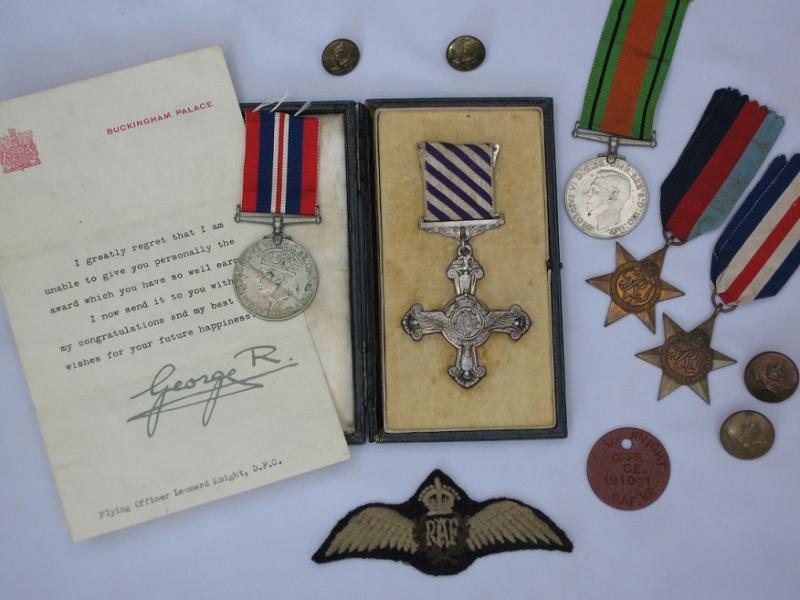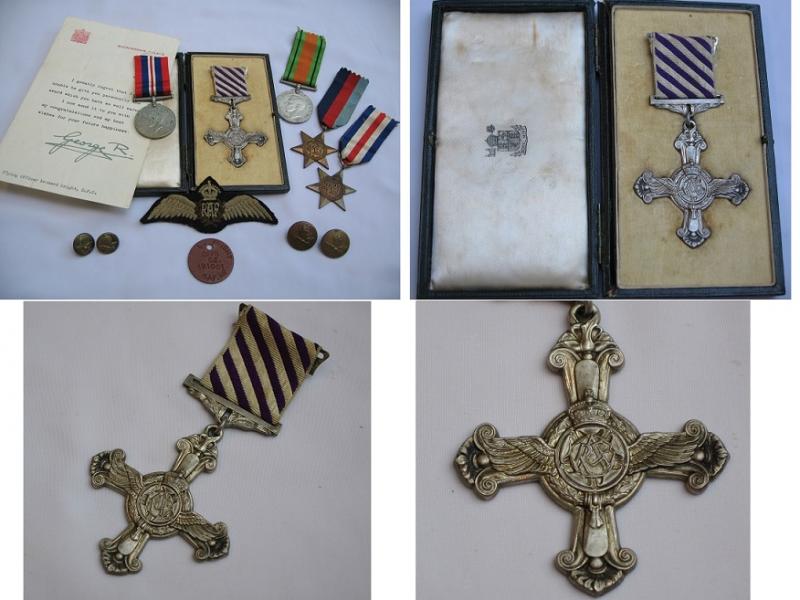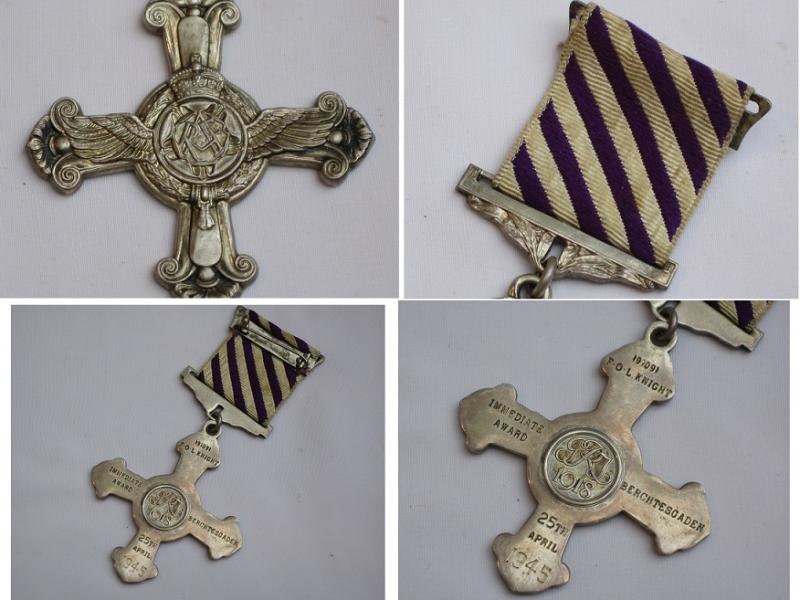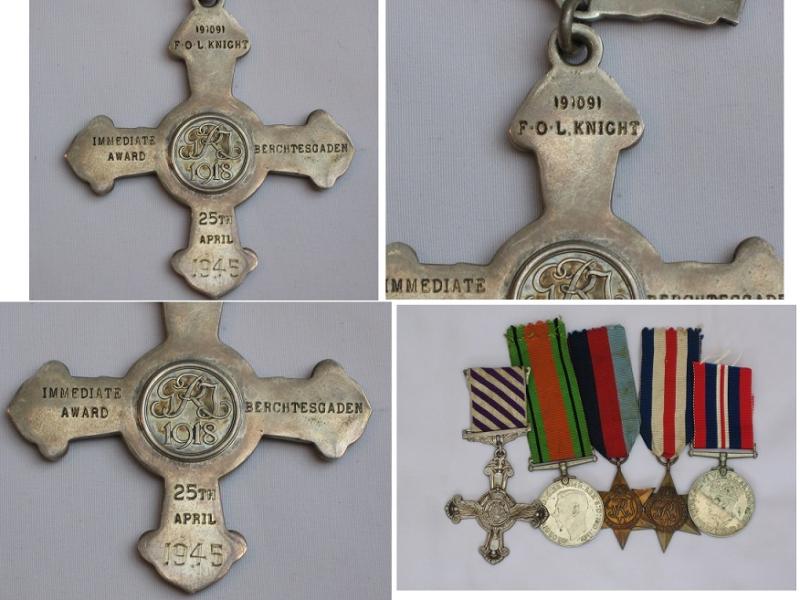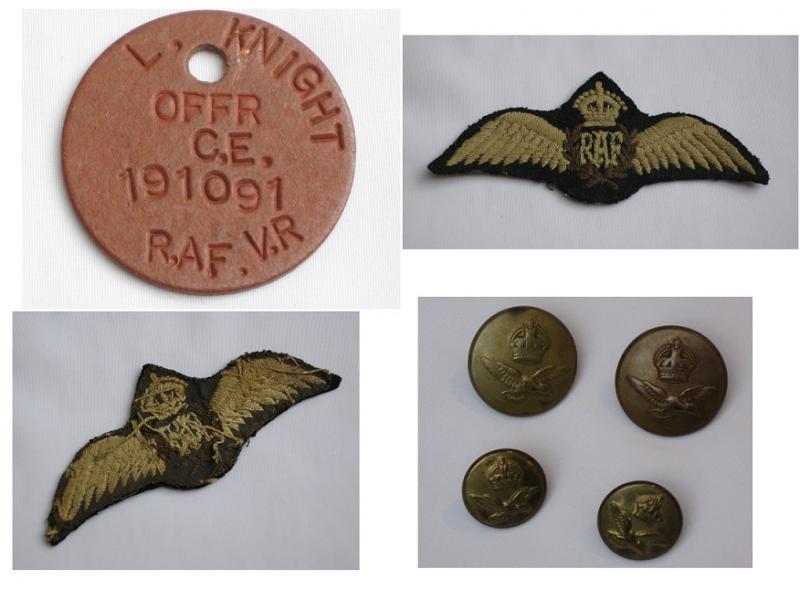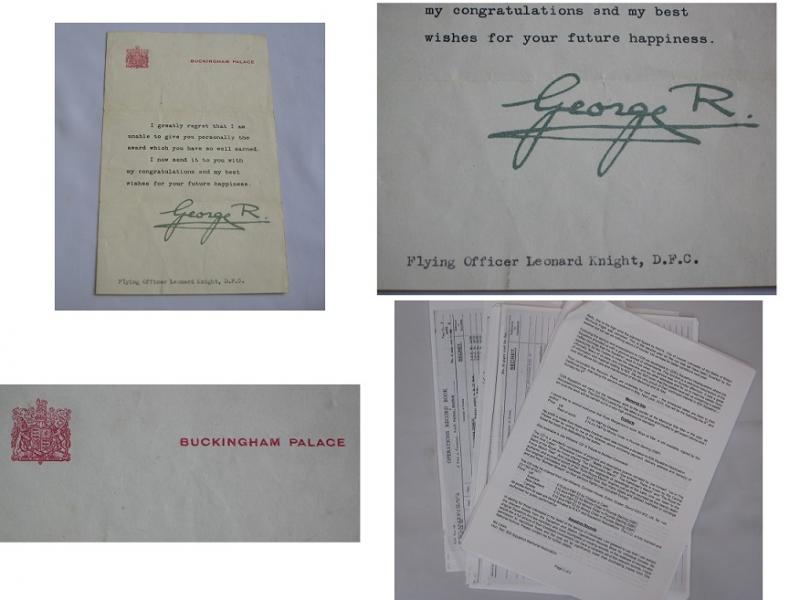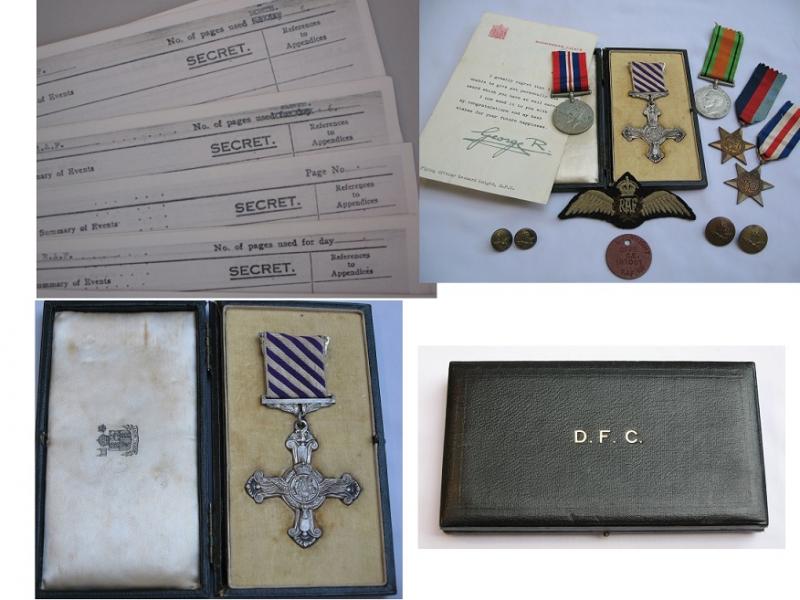Extremely Rare WWII RAF Pilots Grouping Operation Kill Adolf Hitler & Generals. This is a WWII Bomber Command immediate
Extremely Rare WWII RAF Pilots Grouping Operation Kill Adolf Hitler & Generals. This is a WWII Bomber Command immediate D.F.C. Group of five full size medals awarded to Flying Officer L. Knight Royal Air Force Volunteer Reserve, for the famous raid on Hitler’s Eagle Nest at Berchtesgaden 25th April 1945 (Operation to Kill Adolf Hitler and his top Generals). The DFC is made of Solid silver but not hallmarked the remaining medals are base metal. This was Knights first operational sortie and his last main Bomber Command raid of the war. Distinguished Flying Cross V.VI.R, reverse is dated 1945 and additionally contemporarily engraved 191091 F.O. L. Knight immediate Award Berchtesgaden 25th April with named Buckingham Palace enclosure, in Royal Mint Case of issue 1935-45 Star, France and Germany Star, Defence and War Medals 1939-45, together with recipients card identity disc L. Knight Offr. C.E. 191091 R.A.F.V.R, generally very fine and better. D.F.C. London Gazette 26th June 1945. This Officer was pilot and captain in an aircraft detailed to attack Berchtesgaden on the night of 25th April 1945. On the outward flight the port engine became troublesome and had to be put out of action. Despite the loss of engine power, Pilot Officer Knight flew on. High mountains had to be crossed but the target was reached. In the face of much anti aircraft fire a successful attack was executed. Soon after leaving the target the starboard outer engine failed. The propeller had to be feathered. Even so Pilot Officer Knight flew the damaged aircraft to base. He set a splendid example of skill, courage and determination throughout. Leonard Knight was commissioned Pilot Officer in the Royal Air Force Volunteer Reserve on 9th January 1945 and was posted to 625 squadron from 73 Base on 10th April 1945. His first and only operational sortie of the Second World War was on 25th April 945, the raid on Berchtesgaden. Serving as Captain Pilot of Lancaster PA229 Knight and his crew up to 05.11 Target bombed at 10.00 hours from a height of 11,000 feet. Port Inner unserviceable on way to target and Starboard Outer unserviceable after leaving target. This aircraft was overdue two hours but made a successful landing on two engines. Down at 15.15. squadron record book refers. For his skill courage and determination in pressing ahead, successfully bombing the target and getting his stricken aircraft home, Knight was awarded an immediate D.F.C. He was promoted Flying Officer on 9th July 1945. Sold together with the recipients R.A.F. cloth wings, four R.A.F. buttons and copied research. The famous 617 Squadron better known as the Dam Busters also lead and flew along side on this mission.
These items are 100% Genuine, should be in a museum or for a very special collector. In 1945 there was much media attention and coverage but over the years has dwindled into history.
Attack
The bomber crews were woken during the early hours of 25th April to be briefed on the mission. The crews were informed that several senior members of the German Government were at Oberslzberg with some being told that Hitler was there. The attack force took off from bases in the UK that morning. It comprised 359 Avro Lancaster heavy bombers drawn from 22 squadrons in nos. 1 and 5 groups. They accompanied by 16 de Havilland Mosquito light bombers from no 8 group whose role was to guide the bombers to the target using the Oboe navigation system. The bombers were escorted by 13 British fighter squadrons and 98 North American P-51 Mustang fighters from the Eight Air Force. After leaving the UK, the bombers passed near Paris they headed directly towards Obersalzberg upon reaching Lake Constance while the aircraft were outer over Allied held territory for most of the approach flight, the last 250 miles had to be made over territory still controlled by German forces.
The first wave of bombers arrived in the Berchtesgaden area at 9.30am but were unable to attack immediately due to mist and snow. The mosquito Oboe radio systems were proved ineffective as the radio signals were blocked by the mountains. During this period some of the aircraft flew near Salzburg and were fired on by the city’s strong anti aircraft defences several bombers came close to colliding. Once the target was marked the first wave of bombers attached between 9.51 and 10.11 the elite 617 Squadron better known as the Dam Busters was the first unit to strike Obersalberg with its aircraft dropping large Tallboy bombs, the second wave bombed between 10.42 and 11.00 over 1400 long tons of bombs were released the bombing was very accurate. Two Lancaster’s were shot down by anti aircraft guns, several crew were killed and a few captured and taken as prisoners of war.
Condition: very good condition, medal never clean please see photos to judge for yourself
Code: 50284



